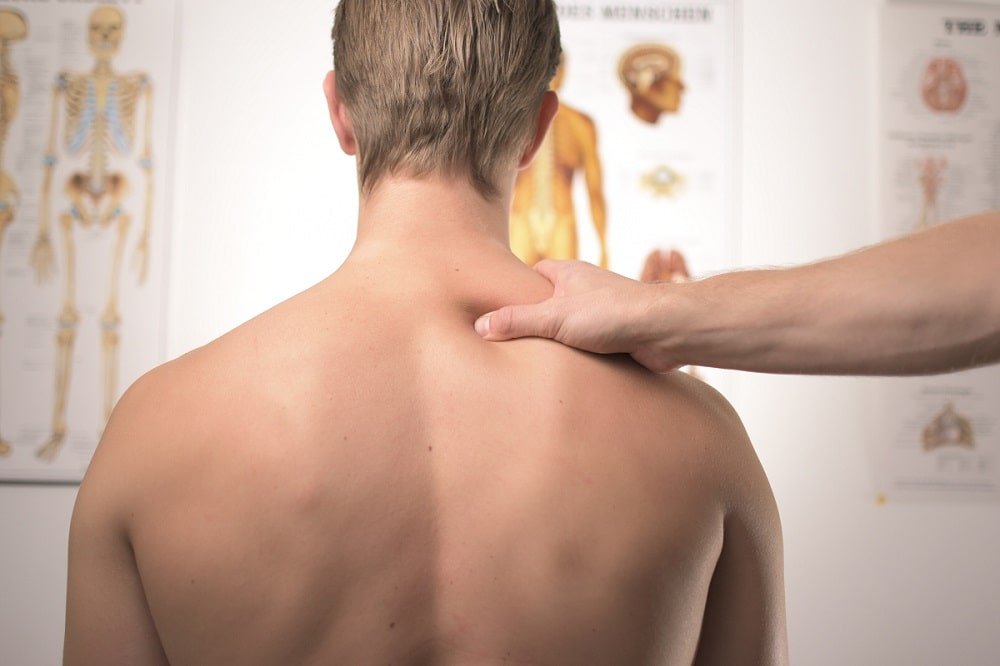Shoulder stretches for rock climbers are essential to counter the negative effects of rock climbing and bouldering. When you climb you mostly pull and thus load these muscles more. When these muscles shorten as a result, they can become painful, alter your posture, limit the range of motion of your joints, and interfere with the coordination of your movements.
Plenty of reason thus, to ensure these muscles don’t stay in their shortened state.
In this article, I’ll discuss the benefits of stretching the shoulders, how stretching works, and various stretching techniques.
Let’s dive right in!
1. Why Should You Stretch Your Shoulders as a Rock Climber?
You should stretch your shoulders because you use them monotonously as a rock climber. Pulling movements require adduction and internal rotation at the glenohumeral joint and protraction at the scapulothoracic joint. When you keep pulling without doing any stretching and antagonist training the resting length of these muscles shortens and your posture will change because of it. This then leads to:
- Reduced range of motion in the thoracic spine, scapulothoracic joint, and often also in the elbow
- Compensatory movement patterns
- Increased risk of injury
- Reduced coordination
Before I explain these effects of repetitive shoulder use without stretching, let’s define the shoulder in more detail.
The shoulder is made up of 3 bones; the scapula where the shoulder socket is, then there’s the humerus with proximally the head of the humerus, which is the ball that articulates with the socket, and the clavicula which connects the shoulder to the sternum providing somewhat of a fixed point. These three bones together make up the shoulder girdle and when we talk about stretching the shoulder, we usually talk about stretching the shoulder girdle. You could stretch the glenohumeral joint but the efficiency of it will be limited because most muscles that you use while rock climbing work on the entire shoulder girdle. Moreover, rock climbing always loads your shoulder girdle as a whole, so it makes sense to stretch it as such too.
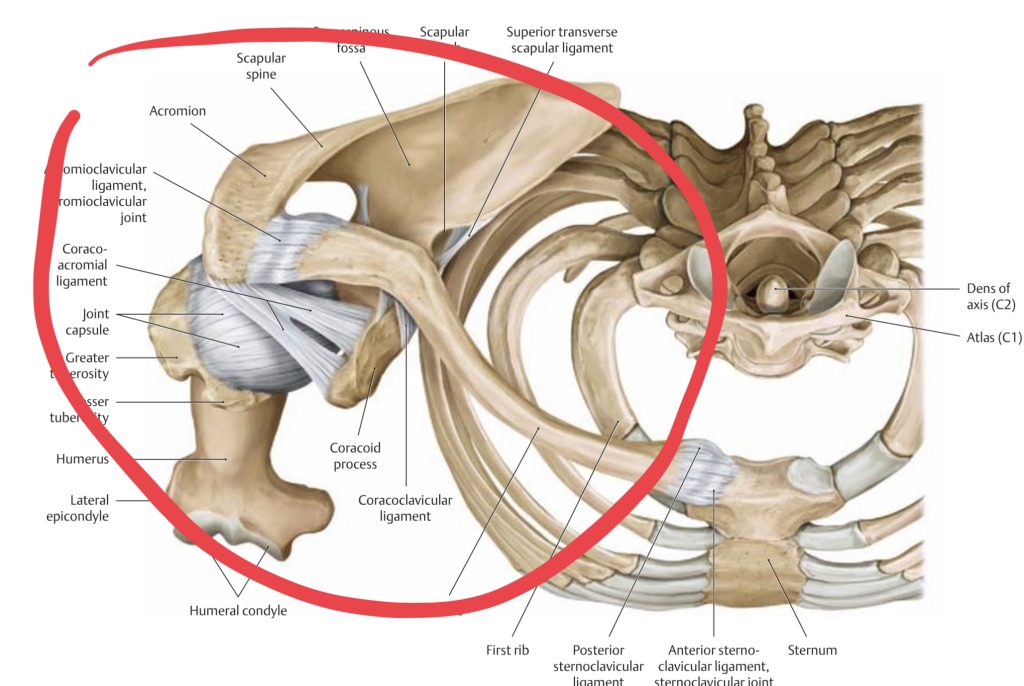
And that’s enough anatomy for now.
Now let’s dive into the 4 consequences of reduced stretchability of the shoulder girdle muscles:
1.1 Protracted Posture
A protracted posture, climber’s back, or hyper-kyphosis can result in:
- Altered respiration due to reduced mobility in the thoracic spine and stiffness in the lats and pectoral musculature.
- Compensatory movements from the neck, thoracic spine, shoulder girdle, elbow, hands, and fingers through a domino effect. This means that an issue in one part of the kinetic chain is being compensated at another point in the kinetic chain where it leads to new issues. And so forth.
- Trigger points in the agonist climbing muscles are due to a lack of relaxation, thus reducing blood circulation.Or, in the antagonist muscles (the muscles that make movements opposite to those of the climbing muscles). Because they need to lengthen as the agonists are continuously shortened. This causes trigger points due to overload. Once you have trigger points you can use self myofascial release with massage tools to treat them.
- Pain, either due to trigger points, generalized hypertension, or irritation of the affected joints.
1.2 Reduced Range of Motion
The first and foremost consequence of reduced stretchability in your climbing muscles is that they don’t lengthen as well anymore and thus limit your range of motion. You might notice this while trying to:
- Lift your arms overhead
- Rotate your shoulder outwards
- Horizontally abduct your arms
- Extend your elbows
This reduced range of motion can then lead to compensatory movement patterns.
1.3 Compensatory Movement Patterns
Compensatory movement patterns are (a series of) altered movements in response to malfunction in the kinetic chain.
Let’s consider the increased protraction of the shoulder girdle again. Normally this influences how well you can raise your arms overhead. Yet, most of you climbers won’t notice this because you raise your arm above your head so often your shoulder capsule will become looser. This way you compensate for the shoulder girdle’s limited range of motion. This could then lead to instability issues in the glenohumeral joint.
Another example would be the lack of extension in the elbow joint which you need to compensate by deviating your hand slightly to still be able to grab something straight above.
These compensatory patterns can lead to injuries in your shoulder, like shoulder impingement syndrome, or farther down the chain like climber elbow, pulley injuries, or tenosynovitis of the finger flexor tendon.
1.4 Increased Injury Risk
The increased injury risk because of reduced stretchability of your shoulder muscles is best summarized in the following Dutch saying: “What doesn’t stretch, tears”.
Muscles that lack extensibility tear when they’re stretched beyond their capacity. Thus, the easiest way to prevent this is by stretching.
But that’s not the only mechanism by which stretching can reduce the risk of injury. Stretching can also improve coordination.
1.5 Reduced Coordination
If your muscles can stretch more, your joints can move through larger ranges of motion. The mechanoreceptors in your joint capsule can then transmit more movement information to the brain. With this information, you get a better idea of where the bones connecting in joints are relative to each other. This perception is called proprioception or kinaesthesia which means: the ability to sense the position and location and orientation, and movement of the body and its parts.
The better your proprioception, the better your coordination, and the more likely you’re to move on rock as well as in your daily life. Where the opposite is also true. Less stretchability means less joint movement, leading to reduced proprioception and coordination.
2. What Happens When You Stretch?
When you stretch you don’t make your muscles longer as is often thought, but you increase the extensibility of your muscle fibers and connective tissue. The actin and myosin filaments that make up the working part of every muscle fiber align better; thus, you use more of the muscle length available. The remaining slack? comes from the improved alignment of collagen fibers in the connective tissue surrounding muscle fibers, muscle bundles, and whole muscles. This connective tissue is also called fascia. On a side note, that’s why it’s so important to start stretching right after the inflammation phase after a tendon or muscle tear; the stretching shows the direction of the force in the muscle or tendon tissue and so helps the connective tissue align correctly. Thus, reducing the amount of scar tissue and increasing the functionality of the tissue.
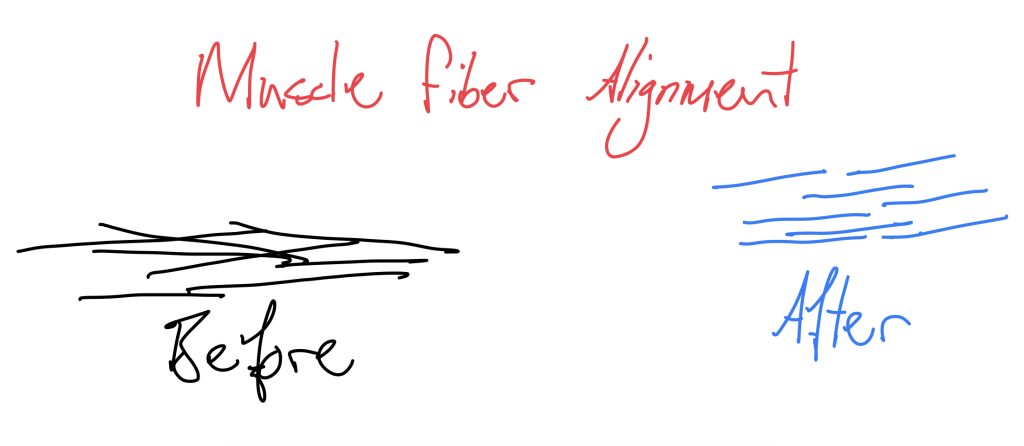
A second mechanism by which stretching can increase flexibility is by increasing resilience to stretch. This is a neurological phenomenon that responds to stretching by delaying the moment you feel pain in a movement. Thus, allowing you to move your joints through larger ranges of motion. A method that leverages this mechanism is the pre-contraction type of stretching. Also called Proprioceptive Neuromuscular Facilitation (PNF), and you’ll read in the next part how to do this exactly.
3. How Should You Stretch Your Shoulders for Rock Climbing?
You can stretch your shoulders statically, dynamically, or by using the PNF technique.
3.1 Static Stretching
According to research stretching a muscle for up to 30 seconds is sufficient to reach its maximum length (source). If you want to increase the stretch, you should release the stretch and repeat it. Up to 4x seems to be beneficial. You can either repeat a stretch 4x consecutively, or you can cycle through all the stretches and repeat that cycle 4x.
The research is inconclusive as to whether it’s beneficial to stretch statically before exercise. So, I always recommend stretching statically after exercise or on off days.
3.2 Dynamic Stretching
Dynamic stretching is moving your joints through their full range of motion for several repetitions. This will both activate the muscles and increase their extensibility. This can be anything from reaching overhead to stretch the lats, doing a couple of full squats to stretch the glutes, or forward bends to stretch the hamstrings.
From my perspective, dynamic stretching is a form of mobility training which I’ll discuss in more detail in a future article. Once it’s there I’ll link it here.
3.3 Hold Relax or PNF Stretching
PNF stretching or hold-relax stretching is done by activating either the agonist or antagonist muscle whereafter it’s stretched statically. You can apply this technique in any static stretch. This is how it’s done:
- Agonist Contraction (the muscle you want to stretch): activate for 10 seconds and then relax it. Since you just activated the muscle, it will relax below its baseline thus allowing for more stretch afterward. The passive stretch after the activation should last between 15-30 seconds. You can repeat this cycle 1-4x.
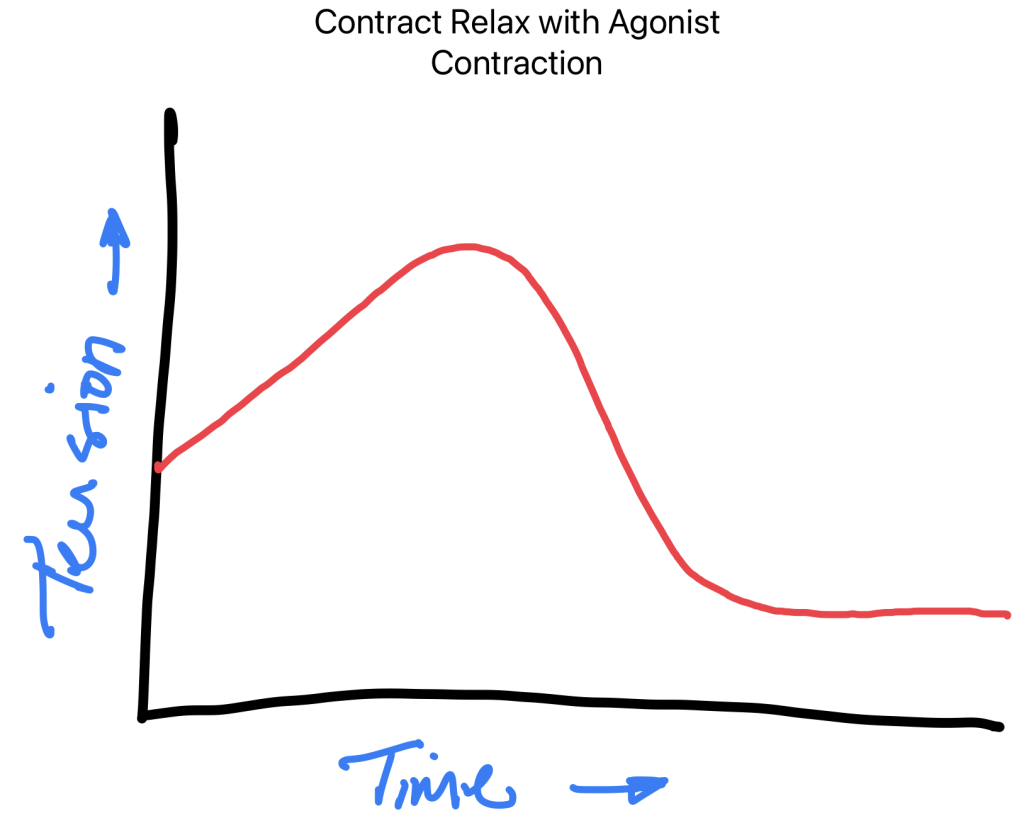
- Antagonist Contraction (the muscle opposite to the one you want to stretch): activate for 10 seconds and then relax it. Because you activated the antagonist, the agonist will relax after which you can stretch it better. The passive stretch after the activation should last between 15-30 seconds. You can repeat this cycle 1-4x.
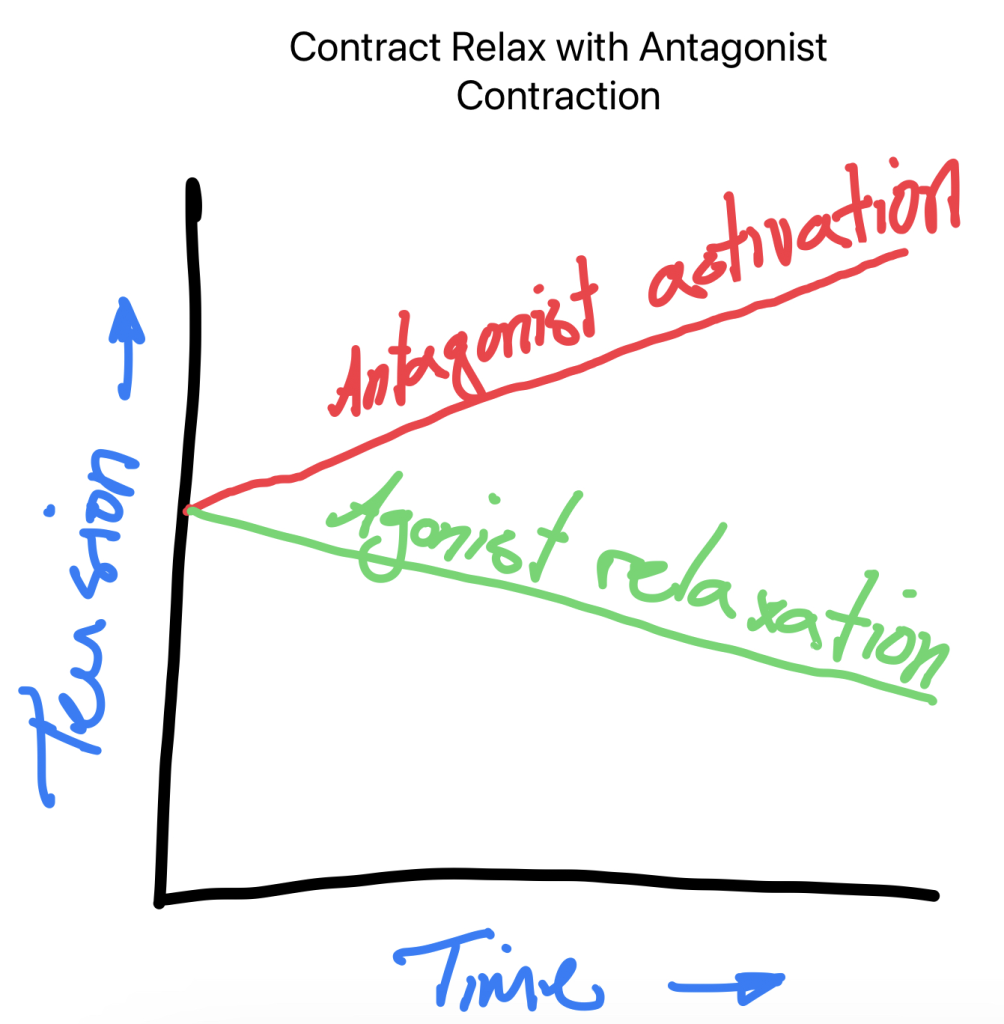
4. The Shoulder Stretches
There are 5 shoulder stretches that I think are worth doing regularly. One moment you should do them for sure is after a rock climbing session. You can do it right after or when you come home.
My absolute favorite exercises are the Kneeling Lat Stretch and the Door Stretch. After I do both these stretches, I feel my posture is better and my entire shoulder girdle is more relaxed. Oftentimes, the tension I felt in my trapezius is gone too. This then renders the trapezius stretch unnecessary. I do add it though because it might be useful when the Kneeling Lat Stretch and Door Stretch aren’t enough.
4.1 Kneeling Lat Stretch
The Kneeling Lat Stretch mainly stretches the latissimus dorsi, teres major, and teres minor.
Place your elbows on a bench, chair, or couch. Grab a stick or a massage roll to keep your arms in place. Be careful to keep your lower back straight so that you don’t compensate by making it hollow.
4.2 Door Stretch
The Door Stretch stretches both the pectoralis muscles, the biceps, and the coracobrachialis.
Stand in between a door frame and place your hands below shoulder height on the frame. Walk forward while keeping your shoulder blades back, and your arms externally rotated, and keep your head upright. Place one foot in front and lean into the stretch.
If you put your arms above shoulder height on the frame the stretch will emphasize the pectoralis minor more.
4.3 Biceps Door Stretch
The Biceps Door Stretch is similar to the normal Door Stretch, only this time you only stretch one arm at a time. This way you can rotate your body more so that you can put more stretch on the biceps.
4.4 Trap Stretch
The Trap Stretch stretches the descending trap. This muscle tenses easily when you spend time in a protracted posture. Be it while rock climbing, belaying, or sitting at your desk at work. The descending trap doesn’t directly cause a protracted posture but tenses rather as a consequence. That’s why it’s always good to do the previous stretches first. Door Kneeling Lat Stretch and the Door Stretches directly combat a protracted posture. So, oftentimes the trapezius relaxes after these stretches too.
The best way to do the trap stretch is to do it in a supine position because it’s how you can relax best. If you can’t do it lying, then do it seated. In both cases though, be sure to use the hand that holds the head to hold it in the end position, not to pull. This might cause unnecessary tension. Pulling the shoulder down actively on the stretched side is a better method to generate more stretch.
4.5 Sleeper Stretch
The Sleeper Stretch stretches both the external rotators of the shoulders as well as the posterior capsule. Both these structures can tighten when you spend a lot of time pulling.
It’s best to do this stretch while lying on your side with your scapula retracted (pulled back) all the way. Since the sleeper stretch also targets the posterior shoulder capsule it makes sense to hold it longer than the other stretches. As things go, a capsule needs more time to stretch.
So, now you know the 5 best shoulder stretches.
Let’s look at how these exercises fit into a shoulder stretching protocol after rock climbing.
5. Shoulder Stretch Protocol After Rock Climbing
Do all 5 stretches statically:
- Kneeling Lat Stretch 30s
- Door Stretch 30s
- Biceps Door Stretch/side 30s
- Trap Stretch 30s
- Sleeper Stretch 1m
Repeat this stretching circuit 3x.
However, if you want to stretch on off days, you can follow a different protocol.
Let’s see how to do it.
6. Shoulder Stretch Protocol for Non-Training Days
Do all 5 stretches applying the hold & relax technique with antagonist contraction:
- Kneeling Lat Stretch: 30s of static stretching, followed by 10s pressing your elbows down (50% intensity), followed by another 30s of static stretching.
- Door Stretch: 30s of static stretching, followed by 10s of pressing your hands forward on the frame while keeping your elbows extended (50% intensity), followed by another 30s of static stretching.
- Trap Stretch: 30s of static stretching, followed by 10s moving your head against the blockade of your hand (25% intensity), followed by another 30s of static stretching.
- Sleeper Stretch: 30s of static stretching, followed by 10s moving your hand up against the hand that holds it down (50% intensity), followed by another 30s of static stretching.
Repeat this series 2x.
Great!
Now you know why and how you should stretch your shoulders.
Before I conclude this article though, here are two questions that are often asked about stretching.
7. Is Stretching Good for Recovery?
Yes, stretching can aid in recovery. During exercise your muscles shorten because of repeated use in similar positions. When you stretch you bring them back to their original length. This ensures that you can use these muscles properly in your everyday life and are ready for your next climbing session.
Nevertheless, it’s important to remember that the 3 most effective recovery methods are sleep, sufficient hydration, and good nutrition. Stretching is important but can never compare to nor replace any of the 3.
8. Is Ballistic Shoulder Stretching Good Before Rock Climbing?
Ballistic stretching is a form of dynamic stretching where you bounce in the end range of a movement. This would be a great form of dynamic stretching because it’s fast and bouncy like some dynamic climbing movements, as well as jumping and sprinting. However, research has shown that ballistic stretching increases the chance of injury and I therefore recommend you to not use this type of stretching. It’s also why I haven’t mentioned it in this article.
